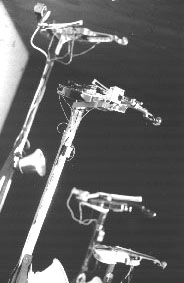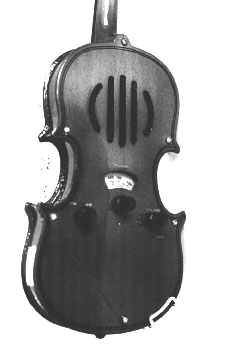INTRODUCTION AND BACKGROUND.The positive effects of fine music on IQ and other cognitive measures have received much Rosenberg-Archive attention in recent years, although scientific proof of the sometimes extravagant claims has not been clear cut. Previous studies by Jackson and Rosenheim [1] found that the arithmetic performance of Primary School students was improved against a background of modern serialist music. Filibert and Johnson [2] reported a statistically significant increase in the IQ test results of Junior College students while listening to selections from popular musicals. Freeharm and Butcher [3] exposed their subjects to four types of music - classical, semi-classical, popular and jazz - as well as a control condition of silence. They found that the subjects who heard jazz read significantly faster than the other groups, although with slightly lower comprehension scores. However, differences in music do not always produce corresponding changes in cognitive performance. With ratings of pastel drawings as a criterion, Offal and Strine [4] noted that both depressed and schizophrenic patients responded equally to stimulating music, relaxed music, and fine music . A study by Henker [5] found that background music produced no significant difference in the quality of simple `either/or' decisions made by a group of senior management officials and a control group of monkeys. (A later review by O'Neil et. al. [6] questioned these findings, concluding that the use of bananas instead of preferential share options would have yielded higher scores for the control group. This indicates that the experimental method itself may often have a bearing on expected outcomes).
Of more interest to the present study, the observation
that auxiliary factors can influence intelligent behaviour appears to be
borne out in a recent study of Australian opera subscribers by Herschel
and Weeney.
[7]
Using
only excerpts from Gilbert and Sullivan operettas, a control group of
subscribers
was exposed to standard promotional material declaring the production a
"...bold modern work", "all Australian production..."
and a "Masterpiece of the Twentieth Century". The experimental
group saw the same production but received brochures proclaiming "...yet
another titillating piece of decadent nonsense", "...A
bagatelle
not even Europe's finest houses would dare to program!" and "Yes!
Another
museum piece!". To the experimenters' surprise,
the latter group recorded a rapturous response, while most members of the
control group had left the auditorium well before the overture had even
finished, muttering "appalling", "never heard so much modernist
crap in all my life" and like pejoratives.
The issues raised in this overview clearly warrant further investigation.
It is interesting to speculate what would have happened in the study if
a "bold modern work" had indeed been used for the experiment.
Likewise, a study of the effects of local cultural conditions on the results
of this study could prove enlightening.
METHOD
An experimental outline was devised using the Spiers -
Rotluff test to qualitatively evaluate the `before/after' responses to musical
stimuli. Subjects were exposed to a range of literature before the experimental
sessions began, including Jamieson's
History of Music in the Twentieth
Century
, Rosenberg's
Yehudi Menuhin Serves Capitalism
, and a
variety of promotional material for local concert events. They were questioned
about their general music knowledge and ranked according to Thysen's retentive
indicator model. It was intended that subjects be divided into a
control
group of professional practitioners, and an
experimental
group of interested amateurs as described below.
However, certain difficulties in formulating the control group soon became
apparent, and indeed aspects of the study's design needed attention in
order to accommodate the experimental group. Firstly, it was impossible
to find a conductor who would consent to take part in the study, most
maintaining
they `wouldn't be seen dead' in the company of the other subjects (
see
below - Ed)
. We therefore decided to replace the conductor
with an old poodle named
Von K
. On the surface this may seem, to
the uninformed reader, a curious step to take. However, we point out that
the dog performed well in a simple verbal test in which he consistently
identified the music of Bach, although he was less successful with other
composers. (In this respect he was ranked equally with the music critic,
who professed to being partial to fine music and "...may not know much
about Hollywood musicals, but I know what I like.")
Secondly, despite the best of our efforts it was impossible to find a
professional
composer to take part in this study. Most of the potential subjects we contacted
who professed some understanding of music composition were either university
lecturers or employed by a "secret government agency".
[8]
The criterion of professionalism
could not be met, and it was decided after much deliberation (and certain
cost considerations) to replace the composer with a standard laboratory
rat.
Another set of difficulties was encountered with the experimental
group.
Not one
opera subscriber would consent to participate
unless we included Gilbert and Sullivan selections in the experiment. Likewise,
the critic refused to join unless we could promise the music was of the
highest calibre, played by a world-class orchestra. Perhaps only our European
readers will understand the impossibility of reconciling these two demands.
[9]
In contrast the arts bureaucrat seemed to have no personal views whatever, and
in fact would only respond after being extensively lobbied by the laboratory
staff.
After filling out a sample questionnaire, subjects were isolated in an anechoic
chamber to avoid distraction from extraneous sound. (Even so, the orchestral
musician maintained that he could still hear two distinct sounds - one high
and one low - which we later traced to a fault in the wiring). Consistent
with current
fine music
programming, the control group
was exposed to a continuous loop tape of Gilbert and Sullivan's
Pirates
of Penzance
for periods of up to 16 hours a day, while the experimental
group was played a selection of modern violin works interspersed by the
G & S selections referred to above.
Subjects' physiological responses were monitored through a one-way mirror
and at the end of each session they were required to complete a questionnaire
of the Spiers - Rotluff type, and undergo a short IQ test.
RESULTS Based on the findings of previous research, we had expected to find a marked, if short term improvement in the Intelligence Quotient of the experimental subjects, coupled with a `levelling off' in mental activity of the control group. In fact, the responses were far more complex than we had imagined and were submitted to extensive analysis.
Control Group
The Dog. As mentioned above, the dog was ranked equally with the music critic in terms of his general musical appreciation. The behaviour exhibited over the course of the test was consistent with a slight improvement in IQ. Within the first hour of exposure to the tape, he would attempt to `sing along' with the recorded music and even `tap out the beat' by means of a scratching motion at the chamber door. This behaviour correlated directly with the musical stimulus and would cease immediately the tape was stopped. It confirmed previous findings that any increase in intelligence attributable to music was only of a short term nature. The Rat . Of all the results obtained from the control group, the rat's responses were perhaps the most intriguing. Within five minutes of the onset of the music it had worked it's way through a maze and begun to gnaw at the wooden panels on the other side. At the end of the fourth session it was found to have not only escaped from the maze but also produced a sizeable hole in the metal sheeting inside the chamber's walls. It therefore became necessary to restrain the rat in later sessions. It was in these sessions that the most interesting behaviour was observed. We began to notice that rat droppings had been carefully positioned on some of the advertising material placed around the chamber, in particular that many of the adjectives in the brochures had been obscured. Thus the words brilliant, stunning and magnificent - used to describe a local Gilbert and Sullivan production - appeared to have been overscribed 'with ratshit. While this behaviour would outwardly indicate some change in IQ, our conclusions must remain tentative at this time, and will form the basis of future study.
Experimental Group
Responses to the Spiers - Rotluff questionnaire changed
only slightly as the experiment progressed. Thus "How would you describe
the standard of playing" received the response "the wals are a
nise kolar but tho chare is too hard". Assessment of physiological
responses proved impossible due to his habit of leaving the room after only
five minutes, only to return at the close of the session with a bottle of
whiskey, shouting "what poor intonation", "lousy
programming",
"modernist
merde
" and the like.
The Opera Subscriber. Having managed to lure the opera subscriber into the experiment with a promise to play Gilbert and Sullivan, we quickly found that we needn't have put ourselves to any such trouble. The subject would invariably appear in full evening dress and refer to the laboratory staff (in their dustcoats) as "those barbarians". Observed physiological behaviour included stomping the feet and hooting at any pause in the music, and on hearing that the experiment did not provide for champagne at interval, the practice of bringing a picnic hamper. Responses to the questionnaire were generally of two types: "a lovely piece by Gilbert and Sullivan" (this apparently regardless of who actually composed the music) and "horrible noise that sounds nothing like Gilbert and Sullivan". The Arts Bureaucrat. Contrary to our expectations, the difficulties we experienced with the arts bureaucrat had to do with getting any meaningful response whatsoever. The subject consistently refused to commit pen to paper, and even verbal responses to our questions were highly cryptic. 1 1 It soon became clear that we would have to decipher the meaning of certain body gestures such as raised eyebrows, pursed lips, sideways glances or winks and so on, in order to make sense of our data. Obvious gestures such as nodding or shaking the head were entirely absent. We began to assume the subject had no personal views at all, until after one session the laboratory cleaner handed in a note with a series of jottings - again in cryptic form - which indicated an underlying process was indeed at work. These notes took the form "John says no good", or "Report from Jeremy indicates support may be warranted", or "overall high ranking but F says could attract bad press", etc. By correlating these notes with observed gestures we were able - or thought we were able - to form some conclusions about the subject's responses. CONCLUSIONS
From the foregoing it should be clear that the evaluation
of our results was by no means straightforward. Despite this, we feel able
to make some reference to the questions posed at the outset of this study,
and present our recommendations as follows:
FOOTNOTES
|

